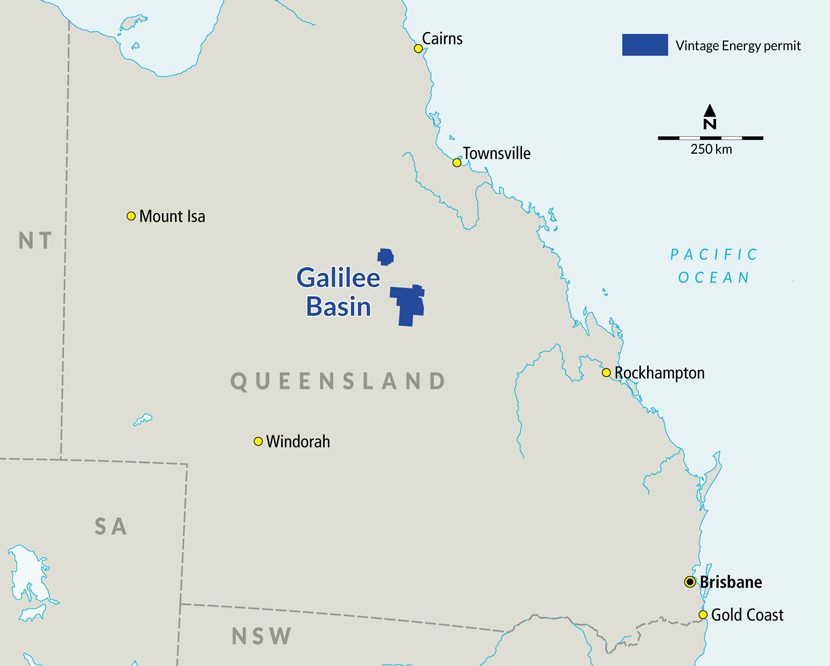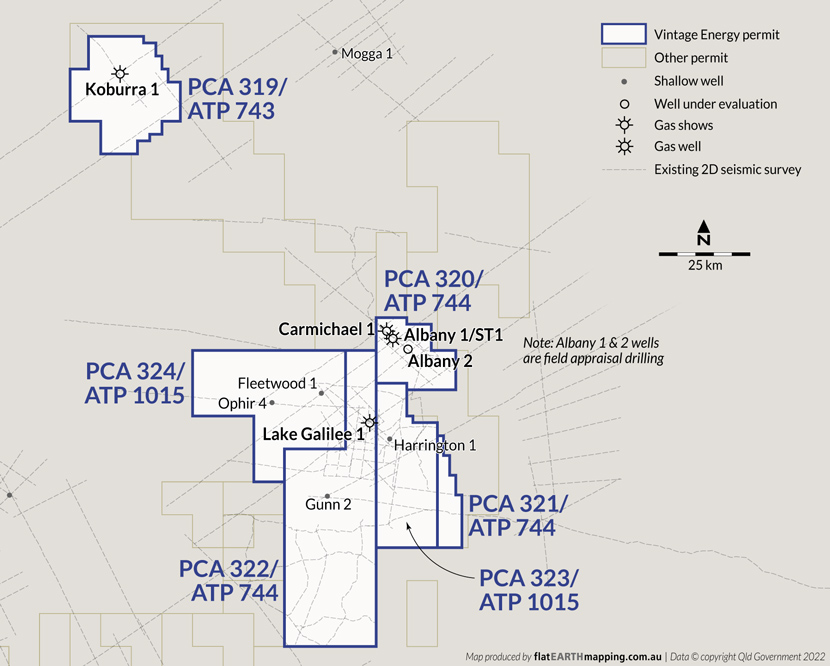

(Vintage 30%, Comet Ridge Ltd (“Comet”) 70% and operator
The Galilee Basin is a lightly explored gas province in proximity to market and the proposed Galilee-Moranbah pipeline. In 2017, Vintage acquired a 30% participation in the Deeps sandstone reservoir sequence of ATP 744, ATP 743 & ATP 1015 (all strata commencing underneath the Permian coals (Betts Creek Beds or Aramac coals) with the main target being the Lake Galilee Sandstone sequence).
The Deeps was tested in 2019 by Albany-1, which recorded the first measurable gas flow from the Galilee Basin, flowing at 230,000 scf/d from the top 10% of the target reservoir without stimulation. Albany-2 was drilled and hydraulically stimulated. Albany-1 was side-tracked but not flow-tested due to the cessation of operations during the Covid pandemic.